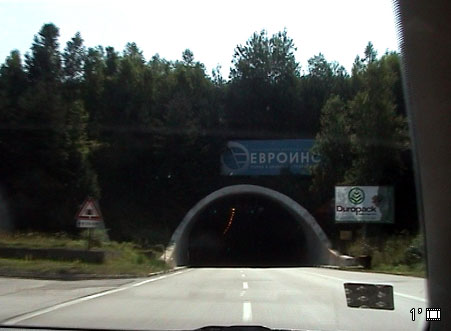M arrived to take us to the EVN offices to make preliminary contact. Everything goes smoothly and quickly. Our prepared itinerary is so detailed it weighs about the same as our big camera and would probably be enough for a trip three times as long.
Into the car and off over the border into EVN country.

Driving out of Sofia we notice modern ruins – office building projects already in a state of decay before they have been completed. By the look of them they are the false starts of the ‘new’ system, architectural evidence of investment enthusiasm that got stranded.
It gets more interesting when we leave the motorway. We go through Belovo to Pazardzhik, passing the high-walled prison on the way. |
|
This sparks a short conversation about mafia-like structures in agriculture, a passing observation that a ‘tomato don’ had been blown up in a bomb explosion not too long ago—probably a mistake on his part, though no one is certain—and that money laundering and corrupt government officials are part of everyday life.
‘There’s a saying here in Bulgaria,’ says M, ‘if there’s something you can’t buy for money, you can buy it for lots of money.’
Tucked in alongside a filling station is a Billa supermarket. There is a complete set of building block high-rises in the background. It is almost as if we were back in the Rennbahnweg development or some earlier Viennese housing scheme, if you discount, that is, the monument to the unsuccessful uprising of 1923 which seems to guard the border between the two commercial enterprises. The revolt, directed against a military coup d’état which deposed the government headed by Alexander Stamboliski of the Bulgarian National Agrarian Union, was particularly strong here and in Pleven and Shumen. The Communist Party did not take part, though later in the year they staged their own version of an uprising which was also unsuccessful. This explains the symbolically bound arms of the forward straining man which is part of the memorial. |